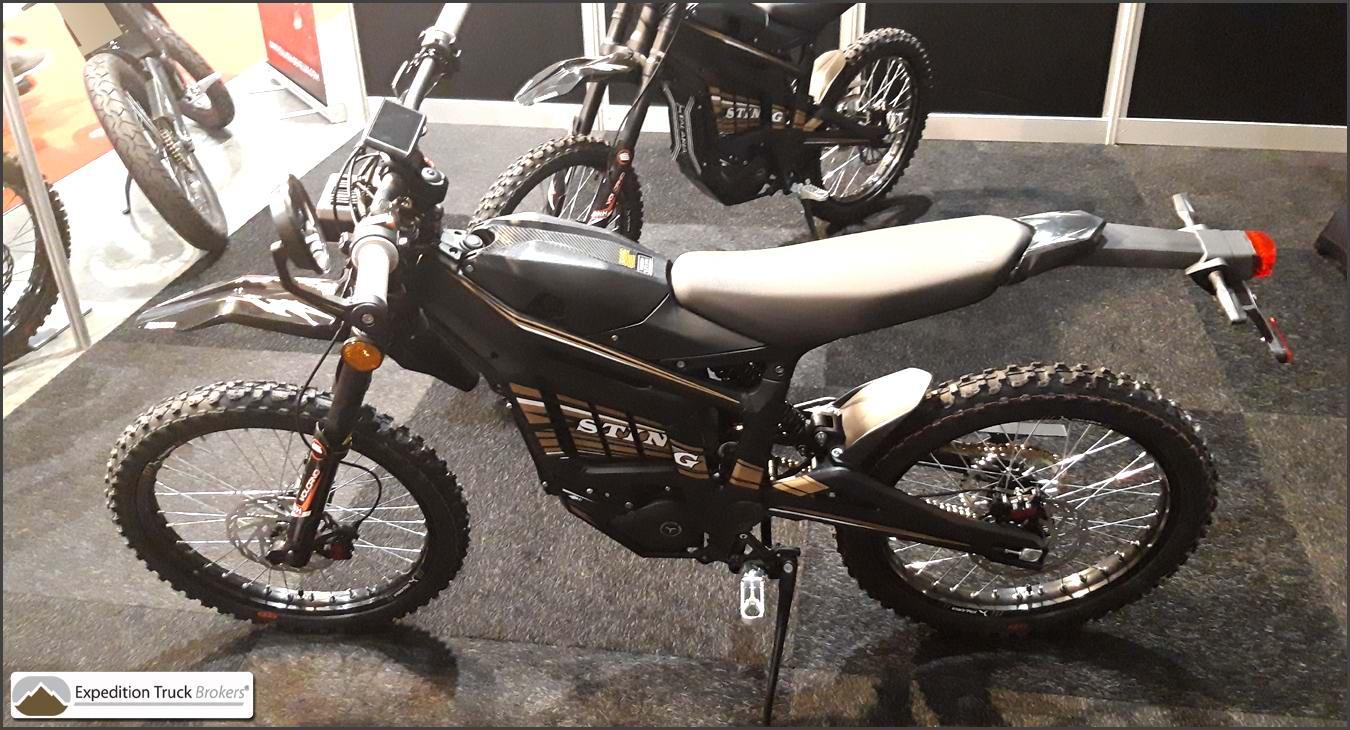Offroad E-bike innovations
Off-road / Dirt E-bikes have been on the market for several years, slowly gaining more traction in the dominant petrol-powered Dirt / Enduro bike market. This article looks into the possibilities for the offroad E-bike while traveling with an Expedition or Overland truck, along with likely future innovations and the current limitations.
[This article is updated on 18 March 2023]
Lightweight Moped & Enduro E-bikes
The Off-road / Dirt E-bikes market is currently dominated by three brands, two from China and one from the USA. The main advantage of considering an offroad E-bike is weight. Less weight for an Expedition & Overland Truck means more agility in off-road conditions. This is compared to heavier petrol-based Offroad- and Enduro motorcycles.
The Off-road / Dirt E-bike market is split into lightweight moped-style E-bikes and heavier Enduro-style E-bikes. This split originates from the required motorcycle licenses in the European bike market. (AM, A1 and A2) The moped-style E-bikes have (software) limiters allowing 4 kW engine power as required for motorcycle license class AM (moped). The Enduro style bike is limited to 11 kW or 15 Kw of power for motorcycle license class A1 or A2. (European classification)
Power ratings above 15 kW are possible, though the weight goes up significantly, impacting the weight reduction advantage of an E-bike compared to a petrol motorcycle.
Lightweight Talaria Sting & Sur Ron Light Bee offroad E-bike
Talaria and Sur Ron are the two market leaders in the lightweight moped-based Offroad E-bike segment.
First, an impression of the Talaria Sting;
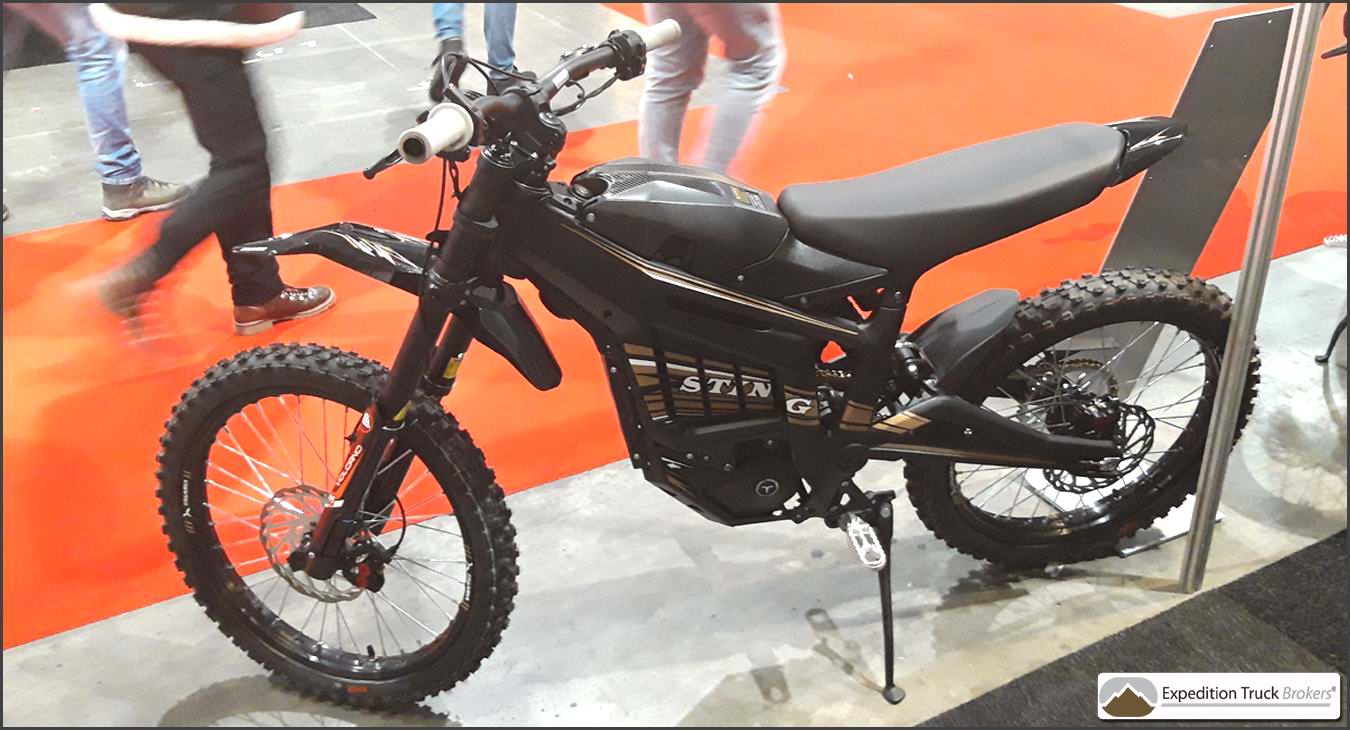
The Sur-Ron Light Bee X;
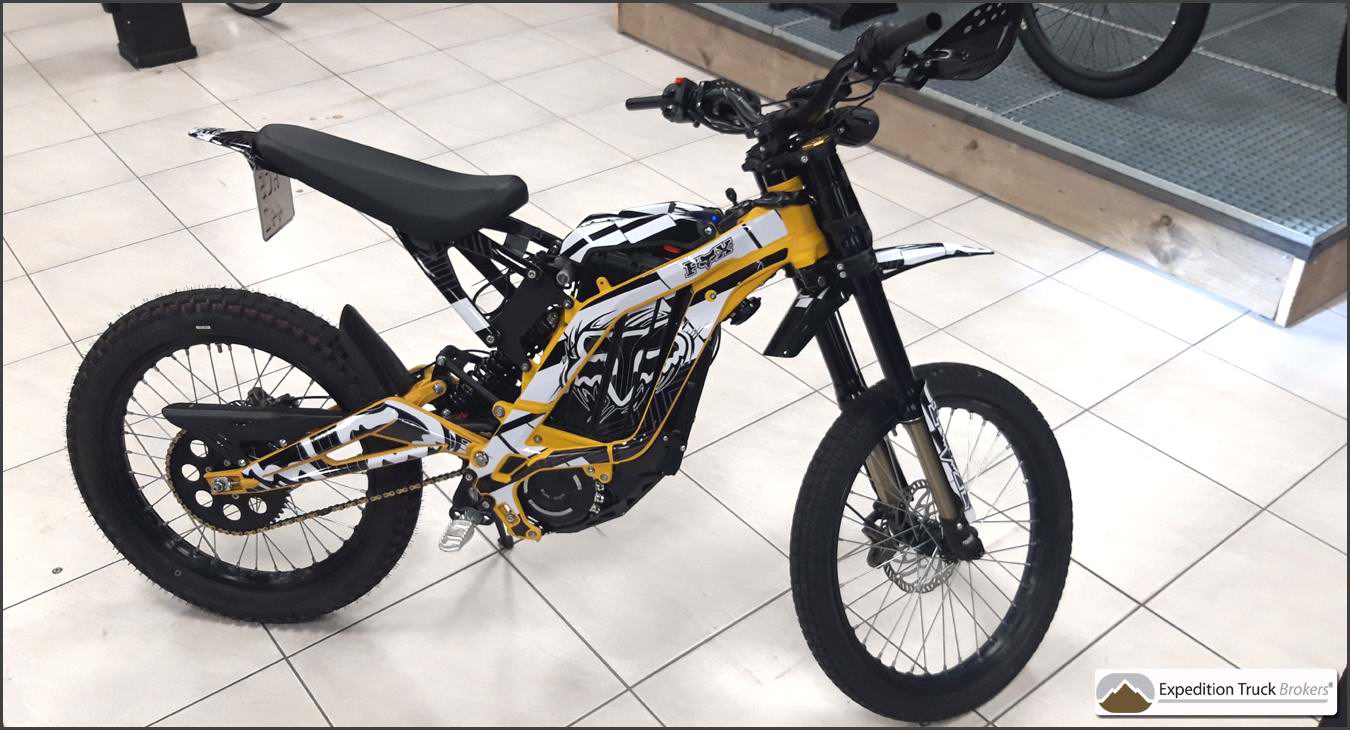
A few specifications;
| Specifications | Talaria Sting | Sur-Ron Light Bee X |
|---|---|---|
| Weight | 63 Kg (with battery) | 47 Kg (w/o battery) |
| Engine power | 3 - 6 kW peak | 3 - 6 kW peak |
| Battery capacity | 38 Amp @ 60 Volts (2.2 Kw) | 38 Amp @ 60 Volts (2.2 kW) |
| Top Speed | 70+ Kmh | 75 Kmh |
| Reach | 100 Km @ 35 Kmh | 100 Km @ 35 Kmh |
| Charging time | 4 hours | 4 hours |
Both brands are relatively equal in terms of weight & performance. The differences currently are more minor innovations and the service network for parts. The power limit can be removed for unleashing the full power up to 70+ Kmh. A larger battery and motor controller can increase the top speed to above 100 Kmh. Both mods are not street-legal and are likely beyond the manufacturer's warranty.
Euduro Bike Sur-Ron Ultra Bee (2023)
The Sur-Ron Ultra Bee has a 12.5 kW motor with EU certification as a 6 kW (EU-A1) motorcycle.
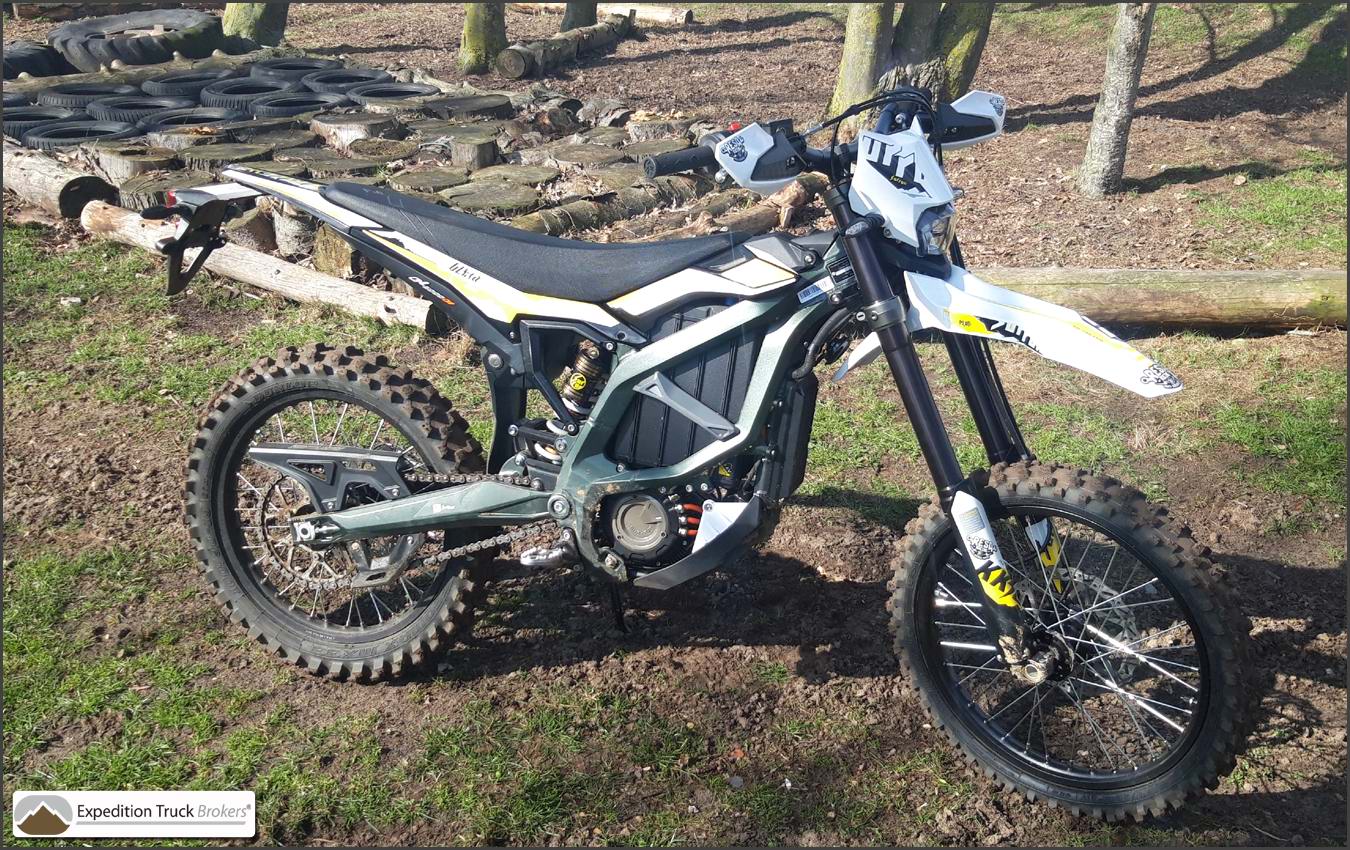
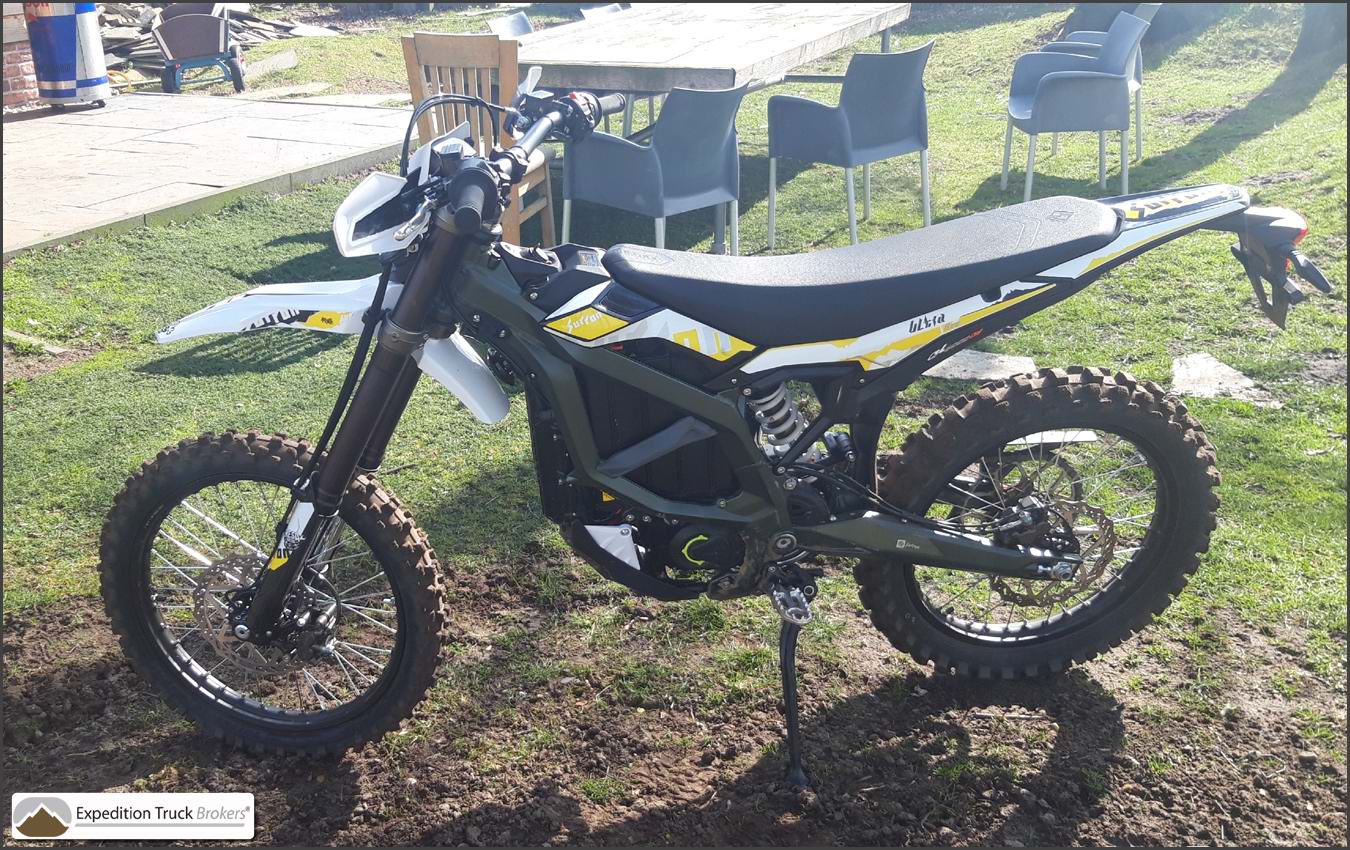
The Sur Ron Ultra Bee has a huge momentum (440 Nm) with 3 driving modes. (Sport, Economy, Drive).
| Specifications | 6 kW EU / EEC Version (A1 License) |
|---|---|
| Weight | 85 Kg (with battery) |
| Engine power | 12.5 kW peak / 440 Nm Torque |
| Battery capacity | 4 kWh |
| Top Speed | 90+ Kmh |
| Reach | 140+ Km (mixed roads) |
| Charging time | 4+ hours |
With approximately 15 Kg more, the Sur Ron Ultra Bee is more motorcycle compared to the Light Bee.
Enduro Bike ZERO FXE ZF7.2
The ZERO FXE ZF7.2 comes in 2 versions, 11 and 15 kW, for motorcycle licenses A1 and A2. (Europe)

The rear view of the ZERO FXE E-bike;
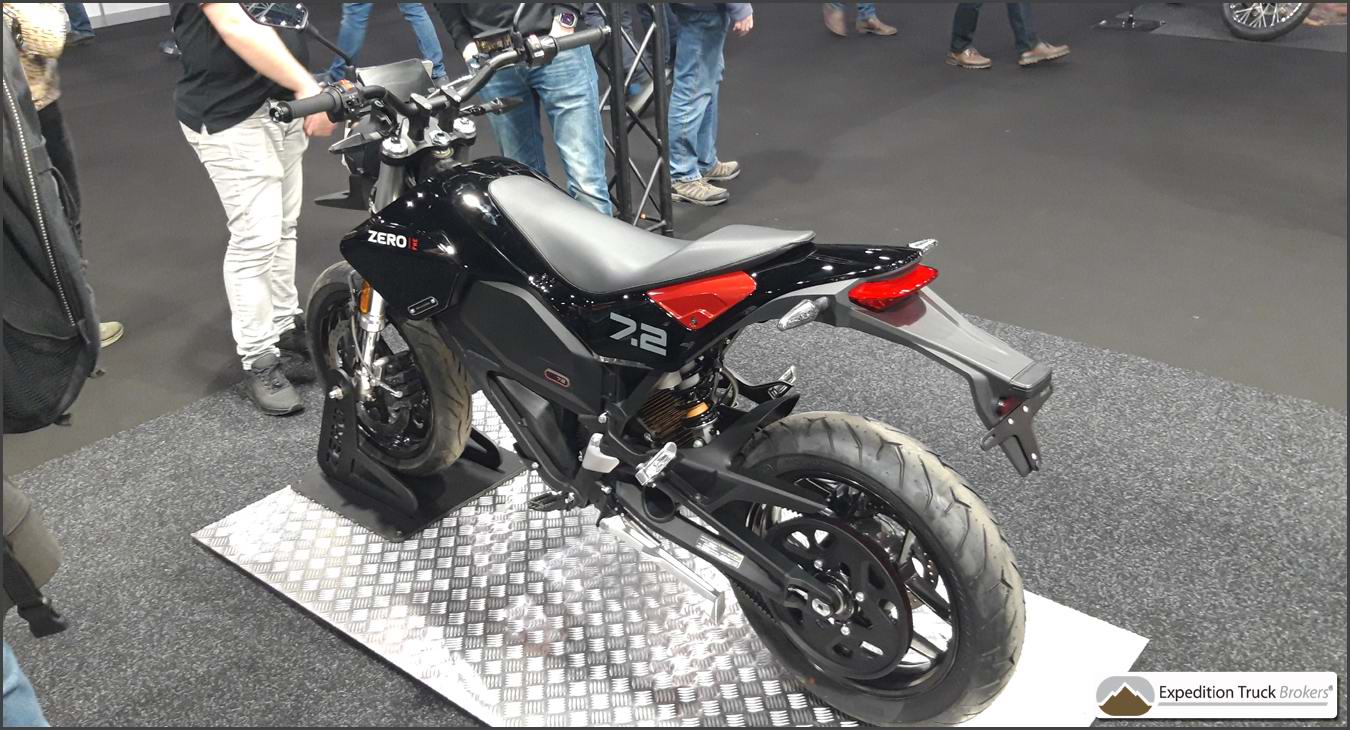
| Specifications | ZERO FXE ZF7.2 |
|---|---|
| Weight | 135 Kg (with battery) |
| Engine power | 34 kW peak / 106 Nm Torque |
| Battery capacity | 7.2 kWh |
| Top Speed | 130+ Kmh |
| Reach | 160+ Km in the city 60+ Km on the highway |
| Charging time | 9.2+ hours (till 95 %) 3.6+ Hours with high capacity charger |
Compared to the Talaria Sting and Sur-Ron Light Bee, the difference is clear. The ZF7.2 is a real Enduro bike capable of highway speeds above 120+ Kmh. This comes with almost double the weight compared to moped-style E-bikes like the Talaria Sting and Sur-Ron Light Bee. Compared to the Sur Ron Ultra Bee, the weight increase of the ZERO FXE is significant with almost double battery capacity.
Advantages for Expedition & Overland Trucks
The main advantage of considering an offroad E-bike is a significant weight reduction compared to a petrol-based off-road bike. This can be especially interesting for Expedition and Overland trucks in the 7.5T segment (Europe), where every Kg counts.
Choosing a Talaria E-bike quickly results in 60 Kg of extra weight space in an Overland or Expedition Truck. This is compared to a lightweight 250 cc dirt bike of 120+ Kg. As bikes reside on a rear platform, 60 Kg less weight can also result in a lighter rear platform. Above that, one can carry two lightweight E-bikes with the same platform strength for a 120 Kg bike. Battery packs can be taken out for charging in the truck garage, removing more weight from the rear platform. (10-15 Kg).
The ZERO FXE ZF7.2, compared to, for instance, a BMW F650 GS, results in a weight reduction of approximately 65 Kg. This may not seem much for a 10+ Ton Expedition or Overland Truck. Though 60+ Kg less at the rear platform results in a significantly lower impulse/impact on a bike platform when navigating off-road terrain.
Other advantages of a lightweight E-bike are;
- One fuel source, increasing safety (no petrol)
- Silent bikes for a quiet survey of the area
- Easier to handle due to lower weight
Future innovations
There is considerable space for innovation to increase the efficiency of an E-bike for Expedition & overland Trucks. To name a few;
- E-bike Battery pack charging over
- the engine alternator
- solar panels only
- solar overcapacity on sunny days
- Limiting the battery pack charge current
- Universal battery pack charger (not especially for E-bikes)
- Built-in charger for charging on location away from the truck
- Built-in GPS tracker with dead man button
Overall impression
Despite modest growth, the offroad E-bike market will likely remain small compared to the dominant petrol-powered Dirt / Enduro bike for the coming years.
The battery pack charging solutions are currently fully electricity grid based. Mobile charging solutions will likely increase, such as charging the offroad e-bike via solar panels or with the car or truck alternator.
Tapping into the E-bike battery pack power is easy to realize, adding to other use cases supporting emergency scenarios.
Full-time use of an offroad E-bike in a remote region is another challenge to solve. Repairability and serviceability in a self-sufficient manner have good prospects. After all, the construction of smaller offroad e-bikes is relatively simple.


